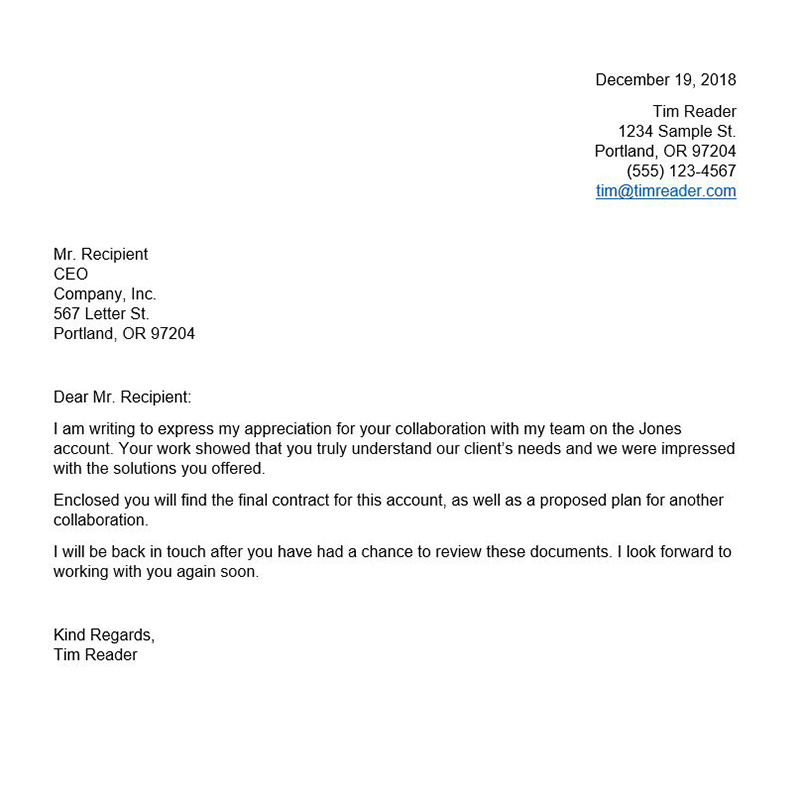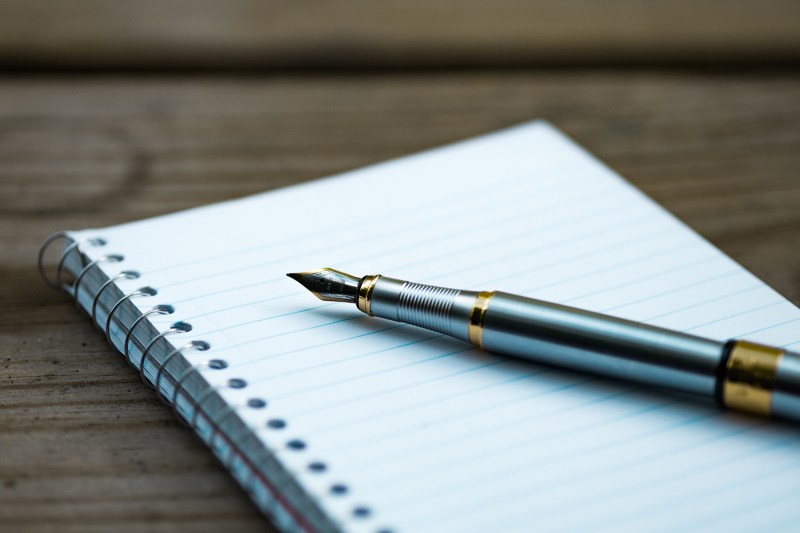Gone are the days when letter-writing was the preferred means of communication between business associates, family, friends, and star-crossed lovers. Snail mail may largely be a thing of the past but look around at your modern lifestyle and you’ll see that the art of the written word is far from dead. Chances are, you spend a large portion of both your personal and professional lives communicating via text or email, and there are still scenarios that call for the old-fashioned formatted letter (even if you are more likely to send it via the world wide web than you are to slap a stamp on it). Communication is critical to every interaction and knowing how to strike the right tone in written correspondence is a vital skill whether you’re writing a love letter or a letter of resignation. To help you stay on the right track, we’ve put together this guide on how to write a letter for any situation.
Define Your Purpose and Audience
Before you can put pen to paper — or rather, fingertips to keyboard — take some time to think about exactly what it is you want to accomplish with your letter. You wouldn’t talk to your boss the same way you would talk to your significant other, so you shouldn’t write to them the same way either. Gather your thoughts before you start writing by asking yourself a few simple questions:
Who Am I Writing to?
Do you know the person you’re writing to or will this be your first communication with them? The way we communicate with one another changes naturally the more familiar we become, so be sure you assess your relationship with the person you’re writing to before you start. This will help you avoid seeming too casual or too terse for the situation.

What Am I Trying to Accomplish?
Are you following up on a job interview or writing a holiday letter to your family? Just as your relationship to your letter’s recipient matters, so does the context in which you’re writing it. You should always be sure to keep professional communication just that — professional — even if you have a friendship with the coworker or business associate you’re writing to. Think of professional communication as part of your overall professional profile. You wouldn’t want a lazy, crude, or overly-casual email to your buddy in the accounting department on your LinkedIn profile, so you shouldn’t want it in your outbox either. The opposite is true, too; if you’re writing a thank you letter to your sweet little gam-gam, the last thing you want to do is sound like you’re conducting a business meeting. Keep your goal in mind as you draft your letter and put yourself in the shoes of the recipient.
Do I Have All the Information I Need to Communicate?
This is particularly important in business communications. Most of us have been on the receiving end of a long string of email follow-ups because the sender didn’t have all the facts in order before they hit send. Don’t be the guy that sends five emails when one would do. This sort of disorganized, stream-of-consciousness email etiquette comes across as irritating at best and downright confusing and unprofessional at worst. If you have a lot of important information to get across in writing, jot down a quick bulleted list of everything you need to convey so you can make sure you’ve covered everything before you send.
Find Time for Formatting
Formatting is critical in formal communications, both to present yourself professionally and to convey information logically. We tend to work at a faster pace when we’re communicating with businesses, organizations, or coworkers because those communications happen during limited hours. So, it’s important that you get your point across quickly and clearly — which is much easier to do with formatting.
How to Write a Professional Letter
Cover Letter; Resignation Letter; Reference Letter; Letter of Recommendation, Interest, or Intent, etc.
You’re probably familiar with the standard formal letter layout, even if you haven’t written one yourself. Most businesses and organizations follow this format because it’s easily recognizable and scannable. Formal letter templates are widely available and are included in most word processing programs. You can also choose to create your own from scratch or customize a letter template for repeated use. Here are some key things to keep in mind when it comes to writing and formatting a formal letter:
1. Use titles. If you’re sending an internal email to a co-worker or team member, addressing them by their first name is most likely fine, but when you’re communicating with a business, organization, or professional contact outside of or higher up in your company, you should never address them by their first name only.
2. Steer clear of informal greetings. Start your letter with “Dear…” (don’t use “Hi,” “Hello,” or any similar greeting) and address the recipient by their title and either their full name or their last name (for example: “Dear Mr. John Smith,” or “Dear Dr. Johnson”). If you don’t already have a contact at the organization you’re writing to, check out the website to see if you can find the relevant person’s name and title. If you can’t find an individual’s name, address it to the appropriate department or group (i.e., “Dear The Manual Staff,” or “Dear Editorial Team”). If you absolutely can’t determine the proper person or department to address, you can use “To Whom it May Concern,” but be aware that this likely means your letter will have to be funneled to the right people once it arrives, which could result in a delayed response.
3. Include the date. If your letter will be contained in the body of an email, your email client will stamp it with a date and time, but if you’re sending your letter as an attachment or through the mail, including the date at the top will help both you and the recipient keep track of the right time to follow-up.

4. Make it easy to contact you. Make sure you provide your name (first and last, including your preferred title) and your contact information. If you’re sending a physical letter or a digital copy of a formatted letter, include your address and phone number at the top so it’s instantly accessible to the recipient. When sending emails, you may think that your email address in the “From” field is enough, but the truth is you don’t know how the recipient may prefer to follow up with you. Create a professional email signature that includes your phone number, address, and any relevant social networking profiles where you’re comfortable being contacted.
5. Use formal language. Beyond the obvious omission of expletives or overly casual language, this also means not using contractions (i.e., “I will not be at this quarter’s meeting” as opposed to “I won’t be there”).
6. Don’t bury the lede. Professional communication requires efficiency, so make sure you are getting to the main point of your letter as quickly as possible. It’s better to have your letter be a concise half page than to try to stretch it out to a full page with filler.
7. Proofread, then proofread again. Programs like Microsoft Word have built-in spelling and grammar checkers, and those should always be your first pass at proofreading. Often, they will even offer suggestions for making your letter more concise and direct, which is a huge help when writing a formal letter. There are also online tools like Grammarly that can help you with your initial proofread. Don’t stop at one pass through spell check, though; you should also read your letter in its entirety on your own to check for errors. Pro tip: Read your letter out loud to yourself or to read it backward (from the last word to the first) to help you catch typos or weird phrasing. If it’s something vitally important, get a second set of eyes on it as well.
8. Be kind, but professional. You certainly don’t want to conclude a letter to a client with a hearty “Love ya!” but that doesn’t mean you need to be cold and sterile. Conclude your letter with a closer (known in word-nerd circles as a valediction) like “kind regards,” “thank you for your time,” “respectfully yours,” or “best wishes” to add warmth to the letter without crossing any lines.
9. Type it. In today’s world, there’s no way around it: If you hand write a formal business letter, you’re going to look unprofessional. It’s also a nice touch to print your envelope rather than hand addressing it.
10. Resist the urge to get creative. Don’t attempt to jazz up your letter with wacky colors or fancy fonts. We’re delighted that you’re feeling artsy, but professional correspondence isn’t usually the time or place. Stick with the standards, like Times New Roman and plain old black-and-white.
How to Write a Personal Letter
Love Letter, Thank You Letter, Apology Letter, etc.
Personal letters are where you can stretch your wings a little and get those creative juices flowing. While special touches are likely to be appreciated in personal letters, there are still some guidelines you should keep in mind.

1. Don’t be too brief. You don’t want to ramble endlessly for three pages before you get to the heart of your message, but it’s nice to include casual conversation in a personal letter to show the recipient that you took some extra time to connect with them. If you haven’t spoken to the recipient in a while, fill them in on your life and ask them about theirs. If you’re thanking them for something, take a few extra lines to expound upon what it meant to you. Depending on the context, it may even be a nice touch to inject some humor into the letter.
2. Use a casual greeting. Just as it’s odd to start a letter to your boss with “Yo Ted,” it’s equally strange to start a letter to your mom with “Dear Mrs. Carol Jackson.” It’s perfectly appropriate to address the recipient of a personal letter by their first name — or even a nickname if you’re particularly close — and to start with a more casual greeting like “Hi” in place of the “Dear” you should use in professional communication.
3. Embrace creativity without sacrificing readability. Those funky fonts and loud color palettes you couldn’t use in your last business letter may find a home in your personal letters. While you don’t want to go so far as to turn your letter into some cryptic jumble of microscopic script and eye-straining colors, it’s perfectly fine to shake off your straight-laced professional persona and have more fun. If you’re sending the letter via snail mail, writing it the old-fashioned way is a nice touch, provided your handwriting hasn’t been whittled into mangled chicken scratch by the prevalence of technology.
In a time when it seems everyone would prefer to send a three-word text over any extended communication, drafting a letter can feel daunting or even intimidating. But if you follow these guidelines, your letter-writing will be on point for any situation.


